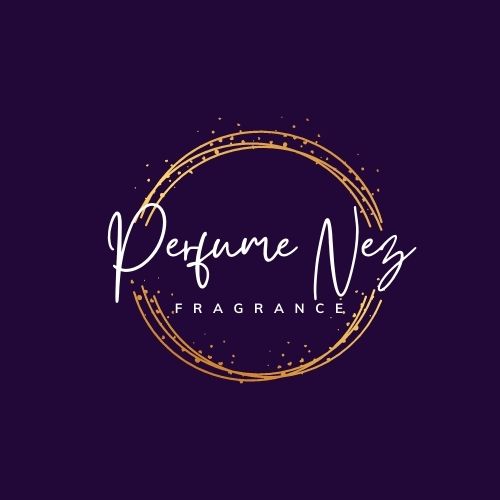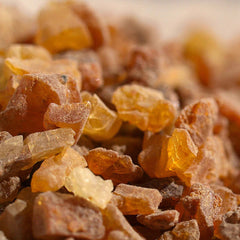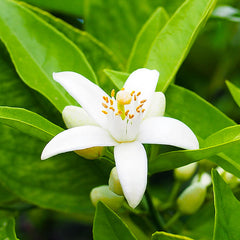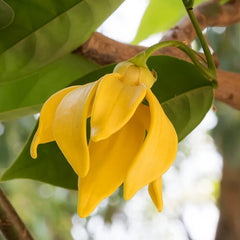What Does Oud Smell Like
Click For Affordable Inspired Perfume Alternatives

Embark on a sensory journey to the heart of the Orient and discover the alluring aroma of oud. Also known as agarwood, oud is a prized resinous wood that has been cherished for centuries for its captivating and complex fragrance. Join us as we delve into the question: What does oud smell like?
What Does Oud Smell Like?
The fragrance of oud is an enchanting symphony of woody, resinous, and balsamic notes that weaves a rich tapestry of scents. Imagine the deep, earthy aroma of a dense forest, infused with smoky and sweet undertones. Oud's scent is a celebration of the mystical and luxurious, offering a unique olfactory experience.
Earthy Opulence: A Forest's Embrace
Approaching oud, the first olfactory impression is an earthy opulence reminiscent of a lush, ancient forest. Picture the grounding scent of damp soil, intertwined with the woody richness of centuries-old trees. Oud's fragrance is a journey into nature's embrace, capturing the essence of the earth in its most opulent form.
Smoky Intricacies: A Mystical Bonfire
The scent of oud carries smoky intricacies that evoke the image of a mystical bonfire. The aroma is reminiscent of fragrant wood slowly burning, releasing wisps of resinous smoke into the air. Oud's smoky notes add depth and complexity, creating an olfactory experience that is both mysterious and alluring.
Sweet Resin: A Luxurious Elixir
While predominantly woody and smoky, there's a sweet resinous quality to oud's scent. This luxurious elixir of sweetness adds a touch of opulence, balancing the earthy and smoky notes with a hint of richness. Oud's fragrance is a harmonious blend of rugged elegance and decadent sweetness.
Animalic Allure: A Touch of the Wild
Delve deeper into the scent, and you may detect an animalic allure that characterizes oud's fragrance. It's as if the aroma carries a whisper of the wild, reminiscent of musky, leathery undertones. This adds a touch of primal sophistication to the overall olfactory experience.
Oud's Oriental Symphony
Hence, oud's fragrance is an Oriental symphony of earthy opulence, smoky intricacies, sweet resin, and animalic allure. It stands as a testament to the luxurious and mystical qualities of this prized resinous wood, offering a sensory experience that is both evocative and indulgent. Oud, with its captivating and complex aroma, invites us to immerse ourselves in the essence of ancient forests, a fragrant journey that unfolds with every intoxicating whiff.
Factors Influencing the Scent of Oud Fragrance Oil
Oud fragrance oil is a carefully crafted composition designed to capture the rich and complex aroma of agarwood. The formulation of this fragrance involves a thoughtful combination of aromatic compounds. Here are several factors that contribute to the opulent and intricate scent of Oud fragrance oil:
-
Fragrance Composition: Oud fragrance oil is a meticulously blended mixture of various aromatic compounds, chosen to replicate the characteristic scent of agarwood. This composition may include both synthetic and natural ingredients to achieve the desired olfactory profile.
-
Oud Essence: At the heart of the fragrance lies the essence of oud. Notes of resin, wood, and smokiness are intricately blended to mirror the rich and complex aroma of agarwood.
-
Synthetic vs. Natural Components: Oud fragrance oil often combines both synthetic and natural ingredients. Perfumers make choices to strike a balance between authenticity, cost considerations, and sustainability in the selection of these components.
-
Extraction Method: The method used to create Oud fragrance oil, whether through distillation or extraction, plays a crucial role in defining the aromatic profile. Specific extraction methods contribute to the faithful recreation of the resinous and smoky scent of agarwood.
-
Additional Woody and Resinous Notes in the Blend: The fragrance may incorporate additional woody or resinous elements to enhance complexity. These complementary notes contribute to the overall richness of the scent, capturing the essence of oud.
-
Quality of Ingredients: The quality of raw materials, including the source of essential components, directly influences the depth and authenticity of the oud scent in the fragrance oil.
-
Perfumer's Artistry: The expertise and creativity of the perfumer or fragrance creator are crucial. Perfumers leverage their skills to balance different components, creating a distinctive and luxurious oud fragrance.
-
Regulatory Compliance: Adherence to regulatory standards and restrictions on certain fragrance ingredients is crucial. Compliance with safety guidelines requires careful consideration of ingredient choices to ensure the fragrance is safe for use.
-
Usage in Products: Oud fragrance oil can be incorporated into various products, including perfumes, candles, room sprays, and bath products. The interaction with other ingredients in specific product formulations can influence how the oud scent is perceived.
-
Product Type and Concentration: The concentration of Oud fragrance oil in a product affects the strength and longevity of the scent. Higher concentrations may be suitable for perfumes, while lower concentrations work well for candles, soaps, or room sprays.
-
Storage Conditions: Proper storage conditions for Oud fragrance oil, both before and after formulation, are essential to maintain its stability and scent. Storing it in a cool, dark environment helps preserve the richness of the fragrance.
-
Consumer Preferences and Trends: Formulations of Oud fragrance may adapt to changing consumer preferences and market trends. The popularity of rich and exotic scents may influence product formulations.
-
Artisanal vs. Commercial Production: Differences between artisanal and commercial production of Oud fragrance oil may impact ingredient sourcing, formulation, and overall quality. Artisanal methods may emphasize craftsmanship and unique blends.
-
Post-Formulation Processing: Additional processes, such as aging or filtering after the formulation of the fragrance oil, may influence the final scent and contribute to the desired characteristics.
Exploring different formulations of Oud fragrance oil allows consumers to experience a range of opulent and complex scents reminiscent of the prized agarwood. Individual preferences play a significant role in selecting the perfect Oud fragrance for various applications.
What to Look for When Choosing Oud Fragrance Oil
Selecting an oud fragrance oil allows you to immerse yourself in the rich and complex aroma of agarwood. Whether used in perfumes, candles, or personal care products, consider these factors to ensure you choose a high-quality and authentic oud fragrance oil:
-
Agarwood Authenticity: Seek an oud fragrance oil that authentically captures the deep, earthy, and resinous scent of real agarwood. Look for a fragrance that embodies the unique and complex notes characteristic of quality oud.
-
Natural vs. Synthetic: Determine whether the fragrance oil is derived from natural sources or is synthetically produced. Natural oud oils can provide a more nuanced and realistic scent, closely resembling the aroma of actual agarwood.
-
Blend Ingredients: Check the blend of ingredients in the fragrance oil. A well-crafted combination of natural and synthetic components can contribute to a balanced and long-lasting oud fragrance.
-
Intensity Level: Consider the intensity level of the oud fragrance. Some may prefer a subtle and mysterious scent, while others may desire a more pronounced and decadent aroma. Look for a fragrance that aligns with your desired level of intensity.
-
Versatility: Choose a fragrance oil that is versatile and suitable for various applications. Whether used in perfumes, candles, lotions, or diffusers, versatility allows you to enjoy the complex scent in different settings.
-
Packaging: Assess the packaging of the fragrance oil. Opt for a bottle that is dark or opaque to protect the oil from light exposure, preserving its richness and preventing deterioration over time.
-
No Residue or Discoloration: Ensure that the oud fragrance oil leaves no residue or discoloration when incorporated into different products. A high-quality oil should seamlessly integrate into various mediums without causing unwanted effects.
-
Manufacturer Reputation: Research the reputation of the manufacturer or brand. Choose well-established brands with positive reviews, as they are more likely to produce reliable and high-quality fragrance oils.
-
Testing Options: Look for fragrance oils that offer testing options or sample sizes. This allows you to experience the scent firsthand before committing to a larger quantity, ensuring it aligns with your preferences.
-
Ethical and Sustainable Practices: Consider the manufacturer's commitment to ethical and sustainable practices. Brands that prioritize responsible sourcing and environmentally friendly production contribute to a more conscientious choice.
By considering these factors, you'll be better equipped to choose an oud fragrance oil that not only aligns with your preferences but also ensures a high-quality and indulgent olfactory experience in your chosen applications.
Where to Find Reputable Oud Fragrance Oils
Discovering high-quality oud fragrance oils requires exploring reputable sources that prioritize authenticity and craftsmanship. Here are several places where you can find reputable oud fragrance oils:
-
Specialty Perfume Retailers: Explore specialty perfume shops that focus on unique and exotic fragrances. These stores may carry oud fragrance oils known for their distinctive and opulent notes.
-
Online Fragrance Oil Retailers: Browse reputable online platforms specializing in fragrance oils. Websites and retailers dedicated to perfumery, aromatherapy, or DIY crafting may offer an extensive selection of oud fragrance oils. Check product descriptions and customer reviews for authenticity and quality.
-
Artisanal or Niche Perfumery: Seek out artisanal or niche perfumers who create unique and carefully crafted fragrance oils. Artisan vendors may offer oud fragrances with distinct and luxurious compositions.
-
Aromatherapy Stores: Aromatherapy stores often carry a variety of fragrance oils for different applications. Inquire about the availability of oud scents to add a rich and exotic aroma to your living space.
-
Local Essential Oil or Perfume Shops: Specialty shops focusing on essential oils or perfumes may carry oud fragrance oils. These stores often prioritize high-quality scents and may offer a range of unique and complex aromas.
-
Online Marketplaces: Platforms like Etsy or other online marketplaces featuring handmade or artisanal products can be sources for oud fragrance oils. Look for sellers with positive reviews and detailed information about their products.
-
Specialty Candle and Soap Supply Stores: Explore specialty stores dedicated to candle-making and soap supplies, as they may carry a variety of fragrance oils, including exotic scents like oud. These stores often cater to DIY enthusiasts and crafters.
-
Local Farmers' Markets or Herbal Shops: Check with local farmers' markets or herbal shops that specialize in natural products. Some of these establishments may offer fragrance oils with botanical and exotic scents, including oud.
-
Word of Mouth: Seek recommendations from friends, family, or members of fragrance communities for trusted sources of oud fragrance oils. Personal experiences and suggestions can guide you to reputable suppliers known for quality and authenticity.
-
Testing Events or Perfume Expos: Attend testing events or perfume expos where perfumers showcase their creations. These events provide an opportunity to explore and sample different oud fragrances, allowing you to find one that resonates with your preferences.
-
Specialty Middle Eastern or Asian Stores: Stores specializing in Middle Eastern or Asian products may carry authentic oud fragrance oils. These regions are historically associated with the use of agarwood, and their stores may offer a diverse selection.
-
Luxury Department Stores: Explore luxury department stores that curate a selection of high-end fragrances. Some exclusive oud fragrances may be available in these upscale retail environments.
-
Scented Product Boutiques: Boutiques that focus on scented products, such as perfumed candles, room sprays, and niche perfumery, may carry oud fragrance oils. These boutiques often prioritize unique and high-quality scents.
-
Cultural Festivals or Expositions: Attend cultural festivals or expos that showcase products and traditions from different regions. Some of these events may feature authentic oud fragrance oils as part of their offerings.
Before making a purchase, carefully read product descriptions and check ingredient lists for oud fragrance oils. Authentic and reputable sellers provide clear information about the composition and intended use of their products. Immerse yourself in the opulent and complex world of oud, and let its alluring scent transport you to distant lands.
20 Questions and Answers about Oud:
-
What is Oud in perfumery?
- Oud, also known as agarwood or aloeswood, is a resinous wood derived from infected Aquilaria trees. In perfumery, it is highly prized for its rich, complex, and woody fragrance.
-
How is Oud oil extracted?
- Oud oil is typically extracted through a steam distillation process from the resinous heartwood of Aquilaria trees. The infection in the wood triggers the production of the aromatic resin, which is then distilled to obtain Oud oil.
-
What does Oud smell like?
- Oud has a complex and distinctive fragrance profile characterized by a warm, woody, and sweet aroma with notes of earthiness, balsamic richness, and sometimes hints of animalic or smoky nuances.
-
Is Oud used as a base, middle, or top note in perfumery?
- Oud is often used as a base note in perfumery due to its long-lasting and tenacious nature. It provides a solid foundation for the other notes to evolve on the skin over time.
-
What are some popular Oud blends in perfumes?
- Oud is often paired with various notes such as rose, saffron, amber, patchouli, and citrus to create intricate and luxurious fragrances.
-
Why is Oud considered a luxury ingredient in perfumery?
- Oud is considered luxurious due to its rarity, the labor-intensive process of extraction, and its rich, sophisticated scent. High-quality Oud is often associated with premium and niche fragrances.
-
Does the quality of Oud vary?
- Yes, the quality of Oud can vary significantly based on factors such as the species of Aquilaria tree, the region it's sourced from, and the extraction method. Wild Oud is generally considered superior to cultivated varieties.
-
Are there synthetic alternatives to natural Oud?
- Yes, synthetic Oud compounds are used in perfumery to replicate the scent of natural Oud. These alternatives are often more sustainable and cost-effective.
-
How can you distinguish real Oud from synthetic versions?
- Distinguishing natural from synthetic Oud can be challenging, as modern technologies have improved the replication of its scent. However, experienced perfumers may rely on their olfactory expertise to differentiate between the two.
-
What are some famous Oud-based perfumes?
- Perfumes like Tom Ford Oud Wood, Montale Black Aoud, and Creed Royal Oud are well-known examples of fragrances that prominently feature Oud.
-
Is Oud suitable for all seasons?
- Oud is versatile and can be used in various seasons, but its rich and intense nature is often associated with fall and winter fragrances.
-
Can Oud be overpowering in a perfume?
- Yes, Oud can be overpowering if not blended carefully. Its potency means that perfumers often use it in moderation to avoid overwhelming the overall fragrance.
-
Is Oud used in unisex or gender-specific perfumes?
- Oud is used in both unisex and gender-specific perfumes. Its versatile nature allows it to complement a wide range of fragrance compositions.
-
Can Oud fragrance evolve over time on the skin?
- Yes, Oud fragrances often evolve on the skin, with the initial strong woody notes giving way to subtler, lingering nuances over hours.
-
Is Oud associated with any cultural or religious significance?
- Yes, Oud has cultural and religious significance in various parts of the world, particularly in Middle Eastern and Southeast Asian cultures, where it is used in traditional ceremonies and rituals.
-
Can Oud be blended with other natural ingredients?
- Yes, Oud blends well with a variety of natural ingredients, including floral notes like rose and jasmine, as well as spices like saffron and cardamom.
-
Does Oud change based on its origin?
- Yes, Oud's aroma can vary based on the region and species of the Aquilaria tree from which it is derived. Different origins can impart unique characteristics to the fragrance.
-
Are there sustainable practices in Oud extraction?
- Sustainable practices are gaining importance in Oud extraction to protect endangered species and promote ethical sourcing. Some companies focus on cultivating and harvesting Aquilaria trees responsibly.
-
Can Oud be found in other products besides perfumes?
- Yes, Oud is also used in various products such as candles, incense, and even in certain luxury skincare items, extending its aromatic appeal beyond perfumery.
-
Are there any Oud fragrances suitable for beginners?
- Yes, some Oud fragrances are designed to be more approachable for beginners, featuring lighter compositions or blending Oud with familiar notes like vanilla or citrus to ease into the unique scent of Oud.
Buy Perfumes - Best Online Retailers
Click For Affordable Inspired Perfume Alternatives
Click For The Best Niche Perfumes & Decants
Pheromone Perfumes - Confidence, Attraction & Appeal - Click For More
Home Fragrances & Candle Warmers - Click To Scent Up Your Spaces Today!



